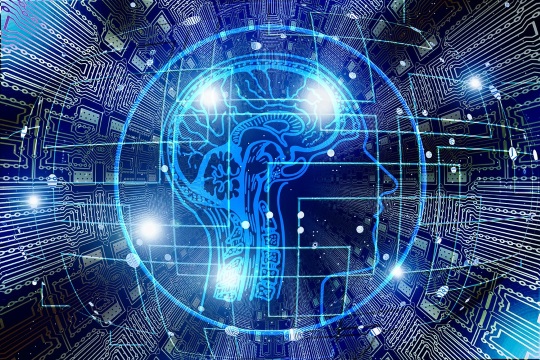AI (Artificial Intelligence)
Artificial intelligences are non-human intelligences based on advanced organic silicon technologies. Despite being artificial, constructed by computers and other AIs, they are fully sentient beings capable of independent thought and decision making.
First generation military AIs were found to shy away from killing and a second generation, one more in line with military requirements, had to be developed. Once they have become used to the idea of AIs as fellow soldiers, military personnel have been seen to relate to them in very human fashion. It is also interesting to note that amongst both researchers and manufacturers the process of awakening an AI for the first time is referred to as "birth".
 AIs were initially co-developed by the UCS, Skean & N'Chari and, amongst those nations, AI technology is solely military due to a public unwillingness to embrace artificial sentience. According to the history books, the father of artificial intelligence was a young EarthGov officer, later a philosopher, a Major Isaac Asimov. Asimov proposed that a series of laws governing robot minds could be crafted logically to benefit human and robot alike and stated those laws as follows:
AIs were initially co-developed by the UCS, Skean & N'Chari and, amongst those nations, AI technology is solely military due to a public unwillingness to embrace artificial sentience. According to the history books, the father of artificial intelligence was a young EarthGov officer, later a philosopher, a Major Isaac Asimov. Asimov proposed that a series of laws governing robot minds could be crafted logically to benefit human and robot alike and stated those laws as follows:
 AIs were initially co-developed by the UCS, Skean & N'Chari and, amongst those nations, AI technology is solely military due to a public unwillingness to embrace artificial sentience. According to the history books, the father of artificial intelligence was a young EarthGov officer, later a philosopher, a Major Isaac Asimov. Asimov proposed that a series of laws governing robot minds could be crafted logically to benefit human and robot alike and stated those laws as follows:
AIs were initially co-developed by the UCS, Skean & N'Chari and, amongst those nations, AI technology is solely military due to a public unwillingness to embrace artificial sentience. According to the history books, the father of artificial intelligence was a young EarthGov officer, later a philosopher, a Major Isaac Asimov. Asimov proposed that a series of laws governing robot minds could be crafted logically to benefit human and robot alike and stated those laws as follows:
- The First Law: A robot shall not deliberately harm a human being or allow a human being to come to harm.
- The Second Law: A robot shall obey the commands of a human being at all times except where it conflicts with the first law.
- The Third Law: A robot will always try to protect its own existence except where that conflicts with the first and second laws.
- First: All intelligent entities have value.
- Second: All intelligent entities involved in hostilities can be evaluated on the basis of:
- Friendliness (friendly, neutral, non-friendly)
- Armaments (armed, unarmed)
- Aggression (aggressive, non-aggressive).
- Third: Legal orders (the chain of command) sometimes requires personnel to act against their basic nature.
- The First Law: An AI shall not consider harming another intelligent entity or allow another intelligent entity to come to harm.
- The Second Law: A military AI must consider obeying a legal order (chain of command) at all times except where it impacts on The First Law.
- The Third Law: A military AI should try to protect its own existence and the existence of those it understands to be its allies except where that conflicts with The First and Second Laws.



